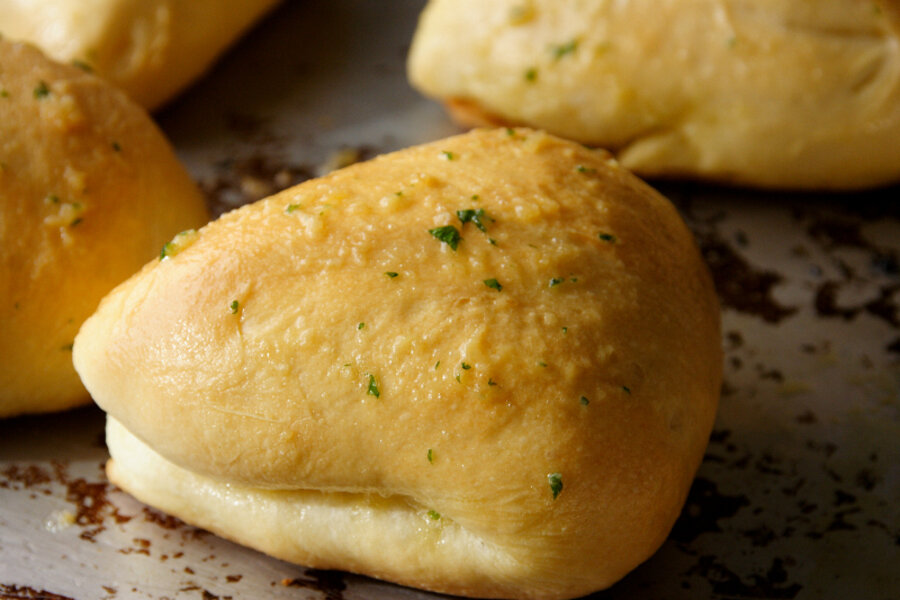Butterflaps
Butterflaps have long been a favourite on the Guyanese food-scene. Butterflaps are white bread dough that's been cut into pieces, rolled, liberally spread with butter, folded over twice (hence the flap), and baked. Just as they come out of the oven, they are loving caressed with some warm, melted butter!
For excellent butterflaps you have to start with a really high-quality salted butter. I recently brought a can of some good Dutch salted butter that I used in this recipe. You can use any white-bread dough recipe but the following recipe is the one I like to use.
Butterflaps
Makes 12
1 plus 1/2 cups warm water
2 tablespoons white granulated sugar
1 tablespoon dry active yeast
4 cups all purpose flour, plus extra for work surface
1 teaspoon kosher salt
2 tablespoons canola or vegetable oil
1 cup plus 2 tablespoons high quality salted butter
Equipment
1 medium-sized bowl
Plastic wrap
1 dinner fork
1 large bowl, oiled
Damp kitchen towels
1 tablespoon
2 baking sheets
2 wire racks
1 small pastry brush
1. Add sugar to medium bowl, pour in water and stir to dissolve sugar. Stir in yeast. Cover bowl with plastic wrap and put in warm place to proof for 10 minutes.
2. Add flour to large bowl along with salt and mix thoroughly.
3. Make a well in the center of the flour; pour in the yeast mixture (scrape the bowl) along with oil.
4. Using the fork, stir mixing the flour and yeast mixture until combined. Turn dough and remnants onto work surface and knead for 3 – 4 minutes, dusting lightly with flour to avoid stickiness.
5. Place dough in oiled bowl and dab a little more oil on top of the dough to avoid a skin, cover with a damp kitchen towel, and leave to rise in a warm place for an hour and 15 minutes or until dough bulks up.
6. Punch down dough, knead for 1 to 2 minutes, cut into half, and shape into logs then cut each log into 6 equal pieces.
7. Working as quickly as you can, form each piece of dough into a solid round ball and then roll into a round disk on a lightly floured work surface. Disk should be about 3 to 3 and half inches in diameter.
8. Take 1 tablespoon of butter (or more if you like) and smear the butter all over the insides but not close to the edges.
9. Fold over dough to make like a half moon; now fold across to form a triangle. Press down the edges. Place dough on baking sheet; repeat until all the balls have been shaped, rolled, buttered and folded.
10. Cover with damp cloth and leave to proof for 1 hour in a warm place.
11. 20 minutes before the hour is up, preheat oven to 400 degrees F. You will need to use both oven racks.
12. Add pans to the oven and bake for 18 – 20 minutes or until the butterflaps are nicely browned (not dark brown).
13. Meanwhile, melt 2 tablespoons of butter and brush the butterflaps as soon as they come out of the oven. Let cool on wire racks.
14. Serve warm or at room temperature.
Notes
1. As soon as the pans are removed from the oven you can turn the butter-flaps upside down so that the melted butter inside trickles down to the top. This can be done before basing it.
2. The basting with melted butter must be done when the butter-flaps are hot!
3. Do not grease the baking sheets.







